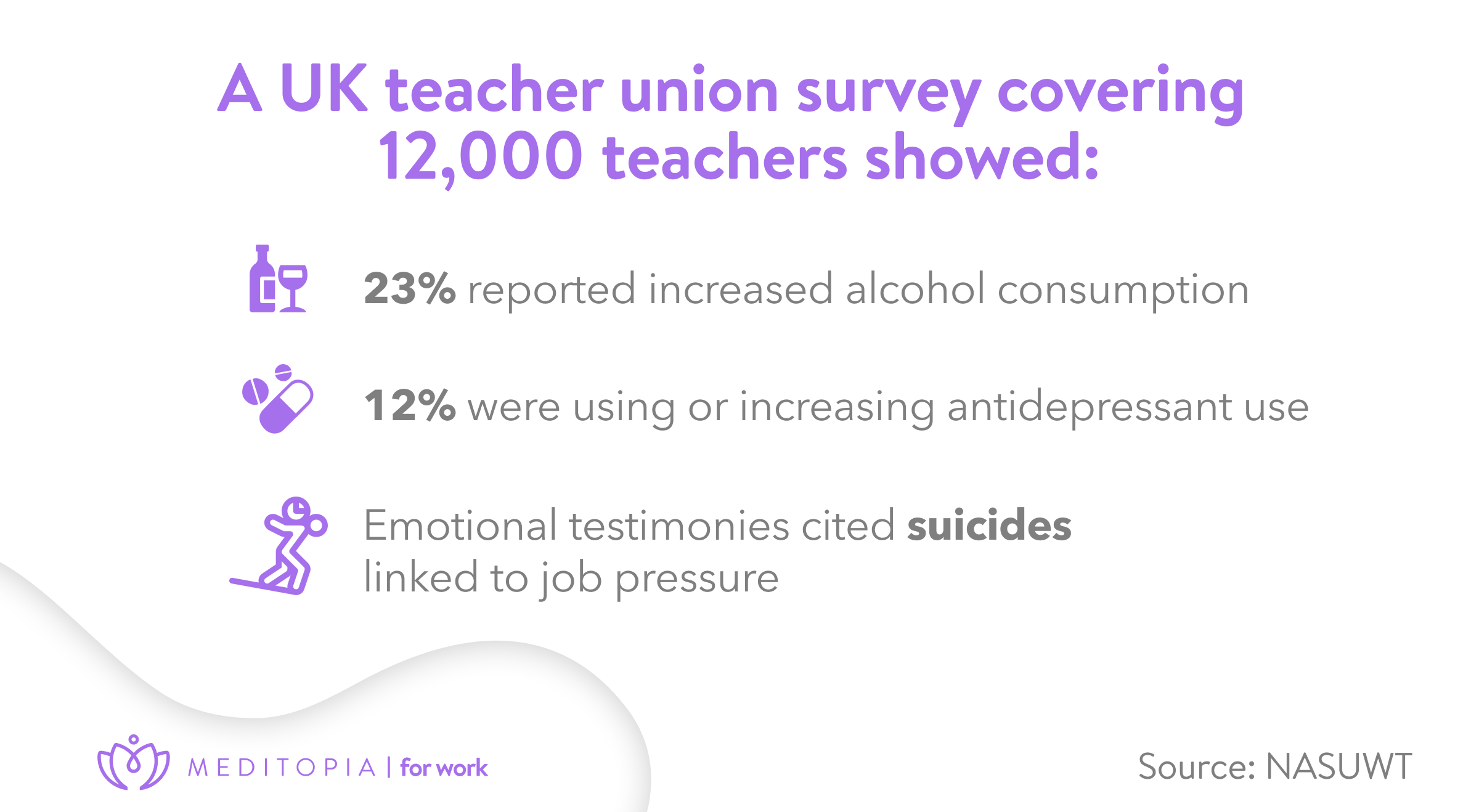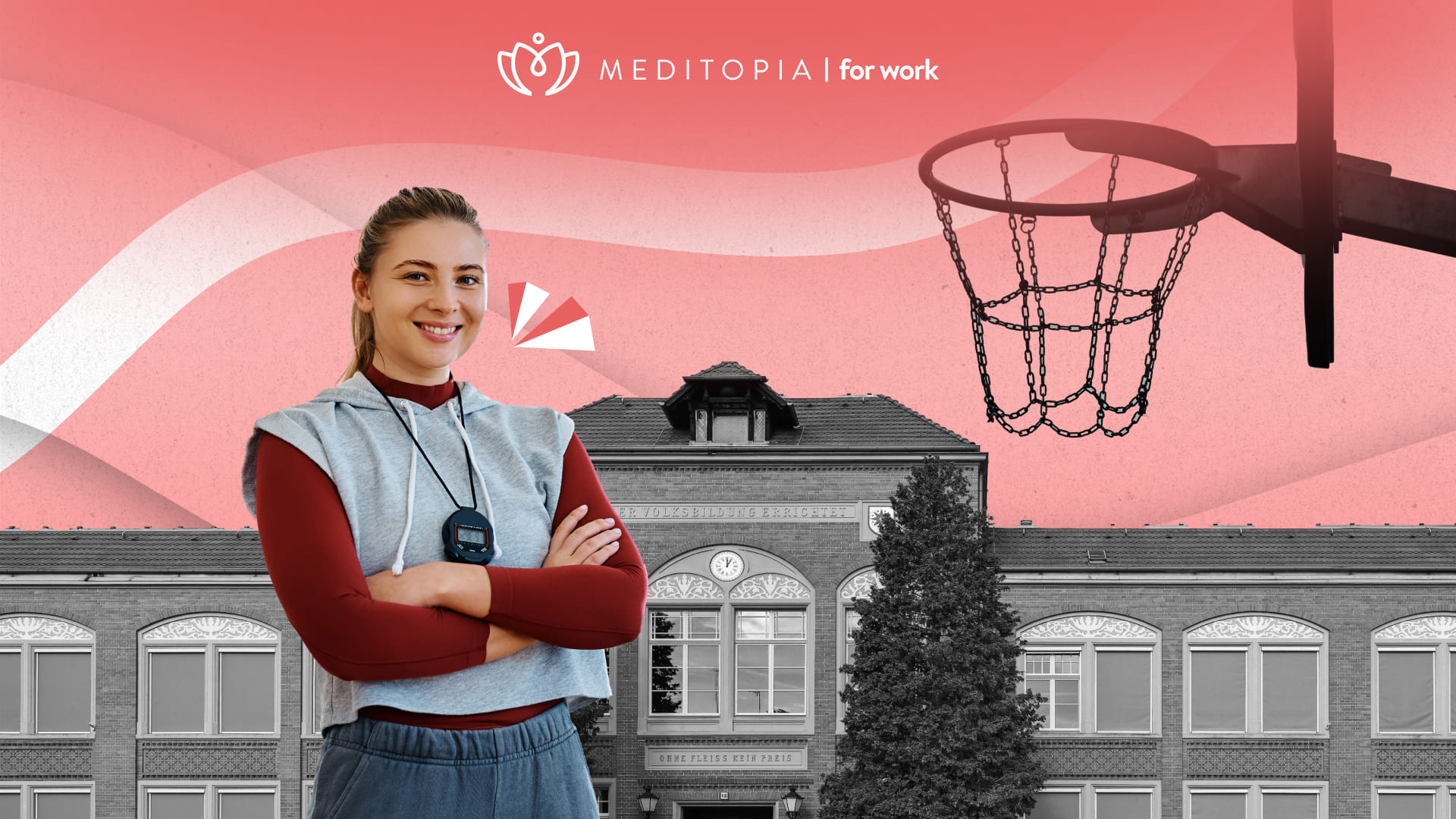For educational institutions, the value of a comprehensive employee wellbeing strategy extends beyond morale. It directly affects workplace performance, absenteeism, and staff turnover rates. Let's discover how incorporating tailored wellness programs in schools can foster a culture of resilience, support, and sustainable performance for educators and students alike.
Why Wellness Matters in the Physical Education and Schools Sector
The education sector, especially physical education, presents unique stressors that require equally unique wellness solutions. Teachers often face emotionally demanding classroom dynamics, limited recovery time, and a lack of resources to care for their own mental health support.
In physical education roles, professionals experience high physical exertion, responsibilities for student safety, and an often-overlooked emotional burden of managing diverse student needs. Consider the following:
- A study published in Teaching and Teacher Education reports that 20–25% of physical education teachers indicated high levels of burnout [1].
- Emotional strain from managing diverse student behaviors, academic pressures, and changing expectations [2].
- Structural and systemic challenges such as understaffing, limited autonomy, and insufficient resources, which elevate burnout risks.
- Another study found that 70% of educators experience job-related stress, with PE teachers reporting higher levels of exhaustion due to the dual nature of physical and emotional responsibilities [3].
- Scheduled tightly around class times, most school staff lack flexibility to access support services, making mobile-first and anonymous usage critical features.
Common Mental Health & Wellness Challenges
Professionals in physical education and the broader school environment face layered and compounding challenges that directly impact their mental health. These challenges aren't just personal, they affect institutional culture, student learning outcomes, and overall retention. Here are some of the most common mental health and wellness issues in the education sector:
- While specific data on PE staff is sparse, general education finds that comprehensive wellness interventions can slash sick-leave absenteeism by about 26.8%, health costs by around 26.1%, and workers’ compensation/disability claims by approximately 32% [4].
- Employees who feel supported are 95% more likely to be satisfied with their job and 19% less likely to look elsewhere [5].
- Healthy employees serve as role models, which can promote student health awareness and behaviors, propagating wellness beyond staff.
- Furthermore, a 10-percentage point increase in positive well-being within early-career teachers correlates with a 6.6-point rise in retention, a vital metric given the high turnover in education [6].
- Rigid schedules, after-hours planning, and extracurricular duties blur boundaries between work and personal life.
- Constant emotional labor without enough support can lead to long-term disengagement or ethical stress.

What an Effective Wellness Program Looks Like in Schools
To be effective, wellness programs in schools must reflect the realities of an educational workday. They need to be flexible, accessible, and relevant to the unique stressors faced by educators. Here are some must-have:
- 24/7 accessibility: Allowing staff to engage with resources on their own schedule helps increase participation.
- Mobile-first delivery: With many educators constantly on the move, mobile access ensures usability.
- Culturally aware, multilingual content: Schools are diverse, wellness tools must reflect that. In Meditopia's case, we offer content in 14 languages, 1-1 care in 5 languages, and 24/7 crisis support.
- Anonymous usage: Encouraging staff to seek support without stigma.
- Flexible formats: Offering both one-on-one sessions and group support workshops.
- Goal tracking and feedback: Data-backed dashboards for both employees and HR to understand engagement and progress.
- Wellness variety: A holistic understanding of human beings makes welness programs cover a wide range of wellbeing needs. In Meditopia's case, we also offer access to gym facilities around the world, online yoga classes for all levels, and classes with personal trainers. Contact us to discuss our wellenss solutions to your unique workforce's needs.
Example Wellness Program Benefits for Schools
The best wellness programs for teachers don’t just promise support, they deliver results through measurable impact, scalability, and real accessibility. Here's how they look:
- Wellness programs in physical education that offer guided movement therapy, sleep hygiene education, or even ergonomic assessments can help maintain sharper focus, prevent injuries, and enhance student engagement.
- As mentioned earlier, supportive environments yield significant retention gains. A 10-percentage-point boost in perceived well-being among early-career teachers translates into a 6.6-point rise in retention.
- The best wellness programs for teachers integrate cognitive behavioral therapy (CBT) tools, guided breathing exercises, and trauma-informed care, enabling staff to build mental resilience.
- Educators who feel supported in their health and wellbeing are 32% more likely to participate in professional development programs [7].
How Leading School and P.E. Companies Approach Wellness
So, now you understand the struggles of the industry and what wellness programs can do for them, but how has it worked for other companies? Let's check it out:
1. Brookings Schools (School District Wellness Portal)
Approach & Strategy:
- Implemented a comprehensive “wellness-first” culture, empowering “Wellness Champions” at each site to lead the initiative.
- Launched campaigns like “Good News Home” to foster positivity among teachers and families.
- Provided a dedicated wellness portal for staff engagement and support.
Outcomes:
- Achieved 97% portal activation for two consecutive years.
- Recorded an 88% increase in employees earning the maximum wellness credit over three years [8].
2. Baltimore County Public Schools (Wellness Grants Initiative)
Approach & Strategy:
- Several schools received wellness grants to pilot staff-focused interventions, including:
- Stress reduction activities, with after-school yoga and stress relief integrated into staff meetings.
- Staff breakroom renovations, creating welcoming spaces for relaxation and socializing.
- Physical activity opportunities, such as walking clubs, upgraded exercise equipment, and gym access.
- Nutrition-promoting efforts, including a “recipe makeover” program teaching low‑salt/sugar cooking, plus smoothie-making equipment in break rooms [9].
Outcomes:
- Staff reported feeling more relaxed and refreshed.
- Improved staff morale, increased socializing, reduced stress, and greater access to healthy food and physical activity.
3. United Independent School District (United ISD) in Texas
Approach & Strategy:
- Recognized as a top employer for its comprehensive wellness program, offering:
- Incentives like yoga, art sessions, and free counseling services.
- Wellness challenges involving weight-loss, walking, volleyball tournaments, and fitness incentives (e.g. smartwatches, blenders).
- Wellness days and wellness leave approved for the 2025–26 year as a support mechanism for staff mental health [10].
Outcomes:
- Awarded “Best Place to Work” in 2025 Laredo Morning Times Readers’ Choice Awards.
- Achieved Gold Level of Excellence by the American Heart Association for focusing on employee/family wellness.
- Approval of annual Wellness Days reflects institutional commitment—though some policy aspects (e.g., notification requirements) are still under revision.
4. Tucson Unified School District (TUSD)
Approach & Strategy:
- Operates an Employee Wellness Committee providing:
- Health education, free physical activity programs for staff, and tools for self-monitoring health goals.
- Engages guardians via newsletters emphasizing healthy lifestyle choices (e.g., nutritious lunches), positioning school staff as role models in health behavior [11].
Outcomes:
- Promotes staff physical activity and self-care, reinforcing a culture where educators embody and model wellness for students and families.
The Future of Wellness in P.E. and Schools
Innovations like AI, wearables, and mobile-first wellness apps are transforming how educational institutions support staff wellbeing, especially in the high-demand context of physical education.
- AI as a virtual assistant and coach: A recent study involving K–12 P.E. teachers found that educators envision AI serving in roles such as operational assistant, personal trainer, and evaluator—helping tailor instruction, manage classes, and deliver individualized feedback while maintaining data privacy safeguards [12].
- Wearables boosting engagement and performance: Research shows that wearable IoT devices (e.g., smart bracelets) significantly improved physical performance in college students, accounting for 66.4% of variance in outcomes, and up to 84.1% when user acceptance was factored in.
- These tools also support real-time tracking of heart rate and activity levels, offering immediate insight into stress or fatigue [13].
- Mobile-first wellness tools for accessibility: With teachers’ tightly scheduled days, mobile apps integrated with wearables can deliver low-friction access to stress relief, mindfulness, or movement-based interventions, right when educators need it.
Meditopia for Work: Wellness That Fits Schools
Schools are unique workplaces. That’s why wellness programs for schools need more than just inspirational quotes or step counters, they need holistic, flexible, and actionable support.

Meditopia for Work delivers just that. Its platform is designed with education professionals in mind, providing evidence-based tools that adapt to school schedules and real-world needs.
- 24/7 Accessibility for Non-Stop Schedules: Meditopia offers wellness access outside of school hours via mobile devices, whether it’s a mindfulness session at 6 a.m. or a sleep aid at 11 p.m.
- Tailored Content for Physical and Emotional Stressors: Meditopia includes movement recovery tools, breathing techniques for stress, and sessions for pain management.
- Localized & Multilingual Options: With diverse faculty teams and student populations, schools need tools that reflect their community. Meditopia offers content in 14 languages and culturally-sensitive wellness sessions, ensuring inclusivity for all staff.
- Built-in Privacy and Anonymity: Mental health stigma remains a barrier in many schools. Meditopia ensures complete anonymity for users, encouraging engagement without fear of judgment or disclosure.
- AI Companionship: With SOUL, our 24/7 available companion trained by mental health experts, your team can discuss personal struggles and get guidance anywhere in a safe environment.
- Automated Reporting and Admin Tools for HR: Auto-enrollment, easy engagement tracking, and ready-to-use reporting to support grant funding or performance reviews.
- Peer and Group-Based Wellness Challenges: Meditopia encourages school-wide participation through gamified team wellness challenges, stress-relief workshops, and group meditations, fostering community, morale, and consistent use.
Explore Employee Wellness Programs Across Industries
Employee wellness looks different across industries, shaped by unique challenges and demands. Explore how diverse sectors support their people and discover what’s happening in the wellness landscape.

























